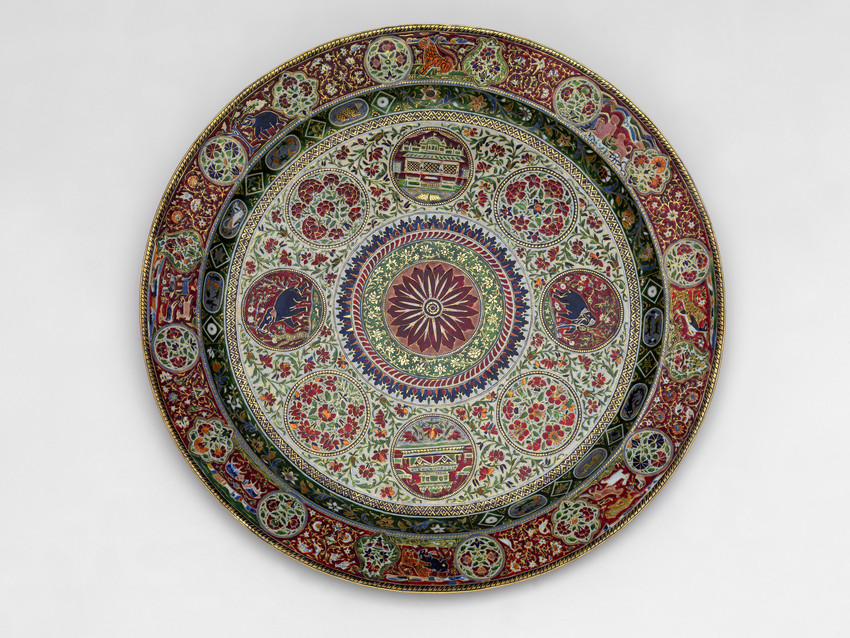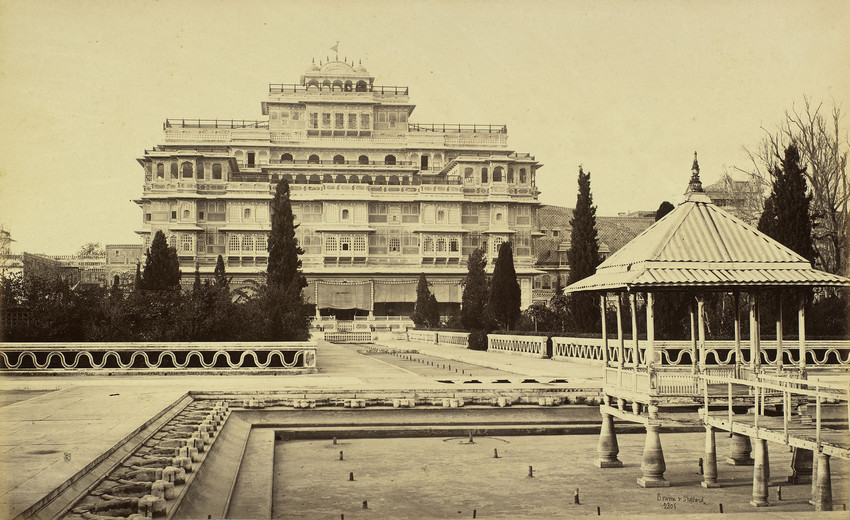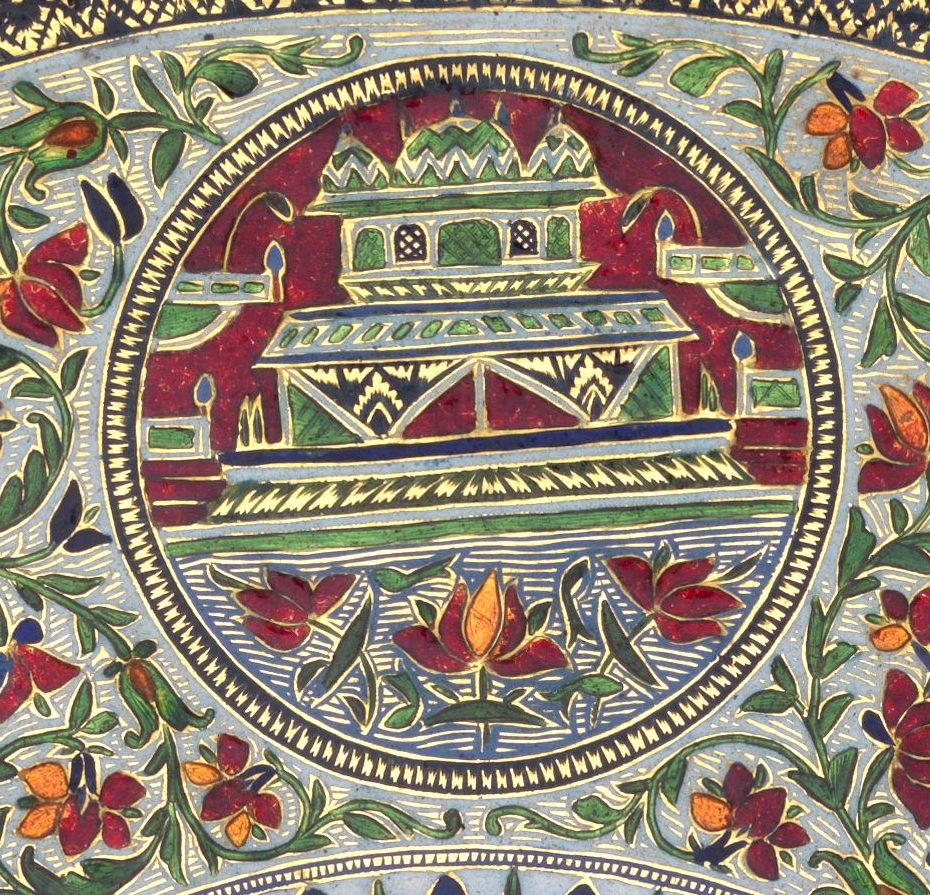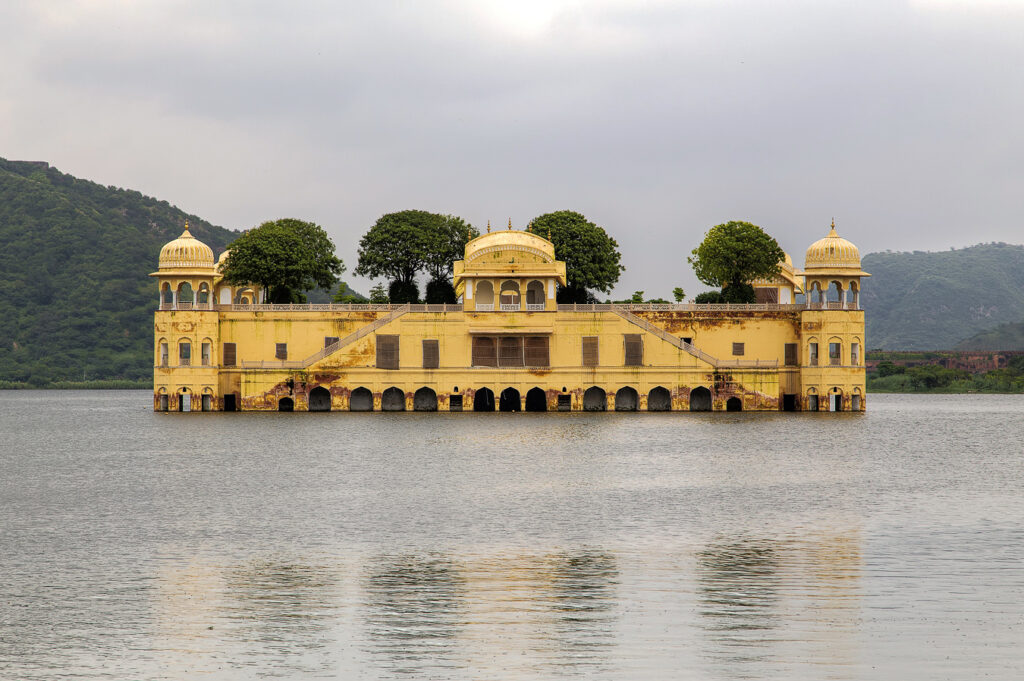This week’s ‘Splendours of the Subcontinent‘ linked post from the Royal Collections Trust is written by Kajal Meghan.
She writes:
Following our last post on the Prince of Wales’s time in Jaipur, this article explores one of the beautiful gifts that the Prince received as a memento of his visit to the city in 1876. This gold salver, enamelled with intricate patterns of animals and flowers, features roundels depicting the Chandra Mahal and the Jal Mahal, two of Jaipur’s famous palaces.

The Chandra Mahal, meaning ‘Moon Palace’, can be seen in the top roundel on the salver. It was built in the eighteenth century and is made up of seven storeys. Today the palace contains the Maharaja Sawai Man Singh II museum and the private apartments of the current Maharaja of Jaipur.


The Jal Mahal, meaning ‘Water Palace’, is located in the middle of Man Sagar Lake. Today, only the top storey of five is visible. Most of the eighteenth century palace is submerged below an artificial lake.


The technique of enamelling had been introduced in India in the late sixteenth century by European craftsmen based in Portuguese Goa. The Mughal emperor Akbar (r.1556–1605) sent his court craftsmen to learn this technique which later spread to the nearby courts of Rajasthan. Enamelling embellished a range of objects such as jewellery, vessels and swords. An enamelled object, such as this salver, would usually require the work of several craftsmen: a designer who would come up with a design based on pattern books, a goldsmith who would form the object out of gold, an engraver who would incise the pattern onto the surface and an enameller who would apply the colours. Each colour would need to be carefully applied and fired separately. This particular salver was enamelled by Ram Singh, one of the leading enamellers of the time, and took four years to make.
Enamels from Jaipur were very popular amongst Europeans visiting or living in Jaipur, and they were often presented as gifts to visiting dignitaries. These works were praised for their richness in colour, delicate workmanship and intricate design. William Howard Russell, writer of the official tour diary, went as far as to say that ‘all the best workmen in London, Paris, Vienna and Rome admit they cannot match this wonderful work!’